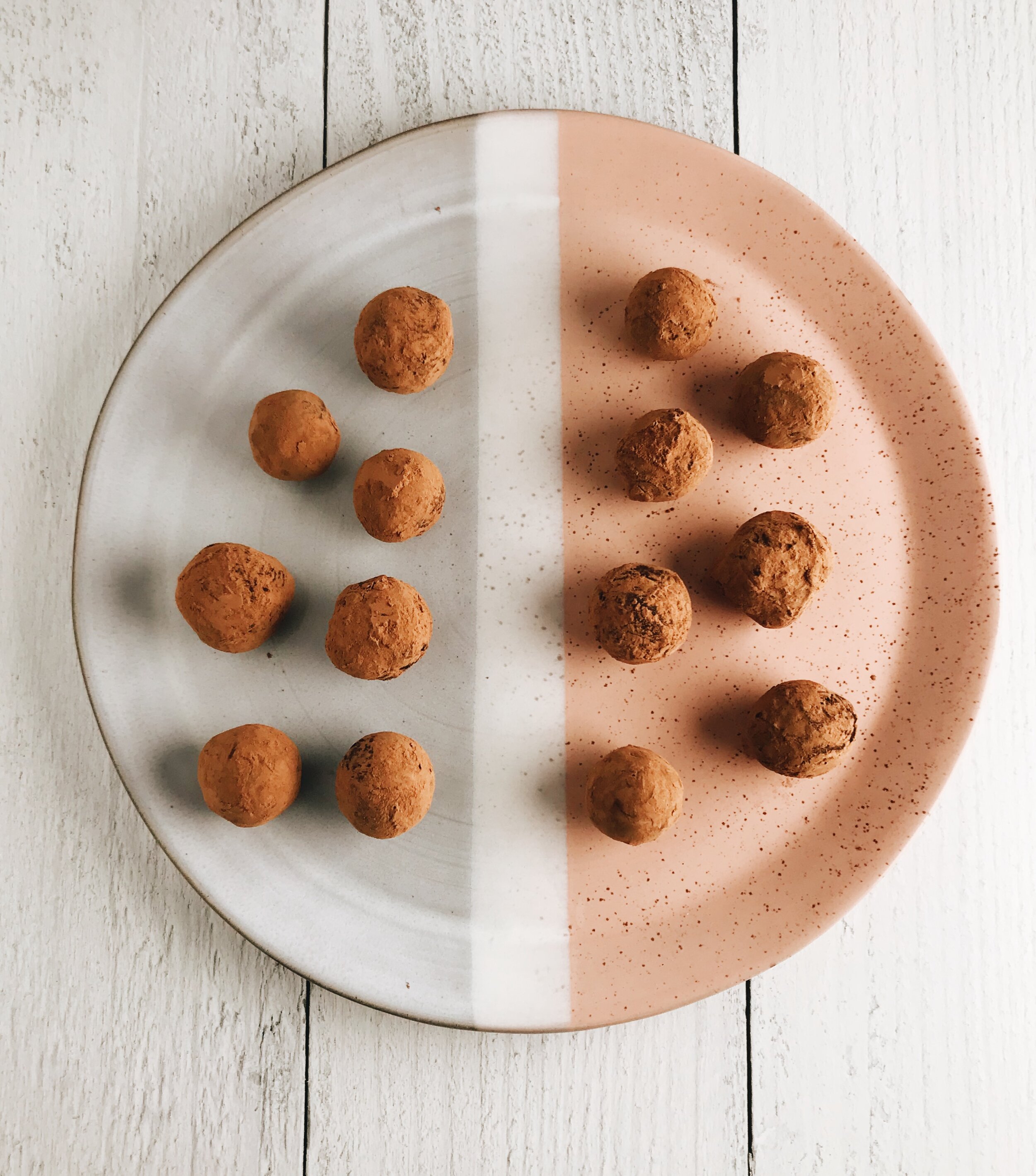How To Make Compound Butter (With Recipes!)
You know what makes everything better? Butter. And you know what’s better than plain butter? Butter with extra flavorings! I think you and I should drop what we’re going and make some compound butter together.
If you don’t know what compound butter is, allow me to paint a little picture for you. Think of a stick of unsalted butter - yellow, smooth, and a little bland on its own. It’s a blank canvas ready to be mixed with other things to become what it’s meant to be; much like a caterpillar on its way to becoming a butterfly. Now think of some of your favorite flavors. Put those two together, and you’ve got compound butter. It is, quite simply, one of the easiest things you’ll ever make in your kitchen, and once it’s done, one of the fanciest. Nothing makes me more excited than going to a restaurant (lol, remember eating in one of those and not just picking up an order in the freezing cold?) and seeing that the table has a variety of butters to go with super fresh bread. Now you can make do it at home!
The flavor combinations are literally endless when it comes to making compound butter. You could go sweet or savory, smooth, or with lots of texture. And since you might be stuck on what flavors to smash together into butter first, I’ll give you two of my favorite combinations: Garlic-Rosemary Butter and Cinnamon-Maple!
To make compound butter you need four things: unsalted butter, a spoon or rubber spatula, your flavorings, and plastic wrap. That’s it! Simply let your unsalted butter soften at room temperature (at least 3 hours), then gently mix it together with your additives until well combined. When you’re done, grab a sheet of plastic wrap, place it flat on the counter, pour your butter mixture into the center of it, and fold the ends of the plastic wrap around it until it’s sealed. With your butter sealed, gently start shaping the butter into a log. To help shape your log more efficiently, take this trick I learned from reading Joanne Chang’s cookbook, Flour: take the inner tube of a paper towel roll and cut open one side lengthwise. Place the wrapped butter inside the open part of the tube and gently roll it around on a flat surface to create a log shape. I also like to refrigerate the log in the tube to make sure it never loses shape.
Refrigerate for at least 5 hours, but best overnight, until the butter has re-hardened and gotten cold, and your butter is ready to go!
Great for cooking with, baking with, or even spreading on crackers, scones, and biscuits, compound butter is incredibly versatile.
Scroll down for two easy compound butter combinations!
Cinnamon-Maple Compound Butter
What You’ll Need:
1 stick unsalted butter, softened at room temperature
3/4 teaspoon cinnamon
1/2 teaspoon maple syrup
Pinch of fine sea salt
Directions
Combine all ingredients in a small bowl and mix together using a spoon or rubber spatula until well-combined. Taste and adjust flavorings as desired.
Place a sheet of plastic wrap on your work surface. Pour all of the contents of the bowl into the center of the plastic wrap. Gently fold the ends of the plastic wrap together until the butter is sealed.
Gently shape the sealed butter together into a log using your hands. For extra help shaping the log, cut one side of a paper towel tube lengthwise. Place the butter log into the tube and gently roll it around on your work surface a few times. Take the butter log out of the tube to examine its shape, then repeat the rolling process if necessary.
Refrigerate the butter log for at least 5 hours (or overnight) until the log has re-hardened and gotten cold. I like to keep the log in the paper towel tube to ensure it keeps its shape in the fridge.
Garlic-Rosemary Compound Butter
What You’ll Need:
1 stick unsalted butter
1 teaspoon fresh rosemary, finely chopped
1/2 teaspoon dried minced garlic
Pinch of fine sea salt
Directions
Combine all ingredients in a small bowl and mix together using a spoon or rubber spatula until well-combined. Taste and adjust flavorings as desired.
Place a sheet of plastic wrap on your work surface. Pour all of the contents of the bowl into the center of the plastic wrap. Gently fold the ends of the plastic wrap together until the butter is sealed.
Gently shape the sealed butter together into a log using your hands. For extra help shaping the log, cut one side of a paper towel tube lengthwise. Place the butter lug into the tub and gently roll around on your work surface a few times. Take the butter log out of the tube to examine its shape, then repeat the rolling process if necessary.
Refrigerate the butter log for at least 5 hours (or overnight) until the log had re-hardened and gotten cold. I like to keep the log in the paper towel tube to ensure it keeps its shape in the fridge.

































